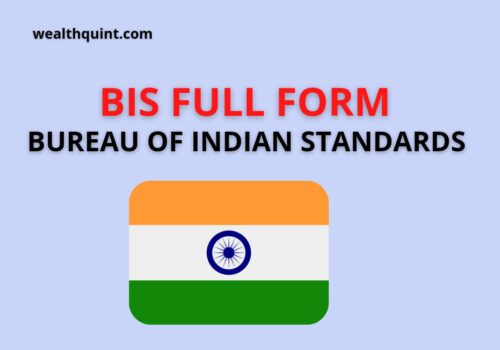ATM Full Form is Automated Teller Machine
Automated Teller Machine is computerized banking machinery that helps people access their bank account directly, without any human interactions. People can withdraw cash and conduct other financial and non-financial activities without going to a bank.
ATMs are very efficient as they allow the customers to do self-service activities. Activities such as loan account inquiry, deposits, cash withdrawals, bill payments, and account transfers. Also, it is easily accessible at any time of the day. You can simply use an ATM by inserting a (swipes) your card into the ATM and entering your Personal Identification Number (PIN). Also in India, the cards that are issued can be used in any bank branch within India. In case you lost your ATM card, the customer should go to the issuing bank branch and seek a replacement card. This step is done even if the card is used at an ATM of a different bank. To avoid fraudulent or deceptive actions, inform your issuing bank as soon as possible if your card is misplaced or stolen.
Features Of ATMs
- Money can be transferred between connected bank accounts.
- Account balances are received.
- Prints the receipts of the transactions.
- Change your pin and make a deposit
- Recharge your prepaid phone
- Payment of bills
- Withdrawal of funds
- Perform a variety of functions in your native tongue.
Types Of ATMs
- On-site ATMs
On-site ATMs are located either within the branch or near the bank’s premises, allowing customers to save time while completing transactions.
- Off-site ATMs
Off-site ATMs are situated outside of banks, such as shopping malls, metros, railway stations, airports, and gas stations. This is on a stand-alone basis, without the presence of a physical branch.
Advantages ATMs
- You can access money anywhere and at any time of the day.
- ATMs can be used to provide financial services, such as withdrawals and deposits.
- ATMs today provide a variety of services, including cardless transactions, cash deposits, person-to-person payments, balance inquiries, and cheque cashing can be done as well.
- ATMs are less expensive to install and operate than physical locations. Also, no employee is required for the ATMs.
- The good thing about the ATMs is they still work even when unforeseen events happen, where businesses are required to shut down. For eg: During floods, lockdowns, or any such crisis.
Restriction On Usage Of ATMs
The restrictions are imposed while assigning the ATM cards to the customers, by the issuing banks. Banks have a set limit of Rs. 10,000 per transaction for any cash withdrawal from other bank’s ATMs and a daily limit is also imposed for withdrawing the money using ATMs service.
Beginning July 1, 2011, a certain amount of free transactions for a month at other bank ATMs for Saving account possessors will include all sorts of transactions, whether monetary or not. Banks charge a maximum of Rs. 20 per transaction if the transactions exceed this minimum number.
How Does One Make A Transaction At ATMs?
The consumer inserts (swipes) their card into the ATM and enters their Personal Identification Number (PIN).
Can I Use My Bank Card At Another Bank’s ATM?
Yes, In India, the cards that are issued in India can be used in any bank branch within India.




